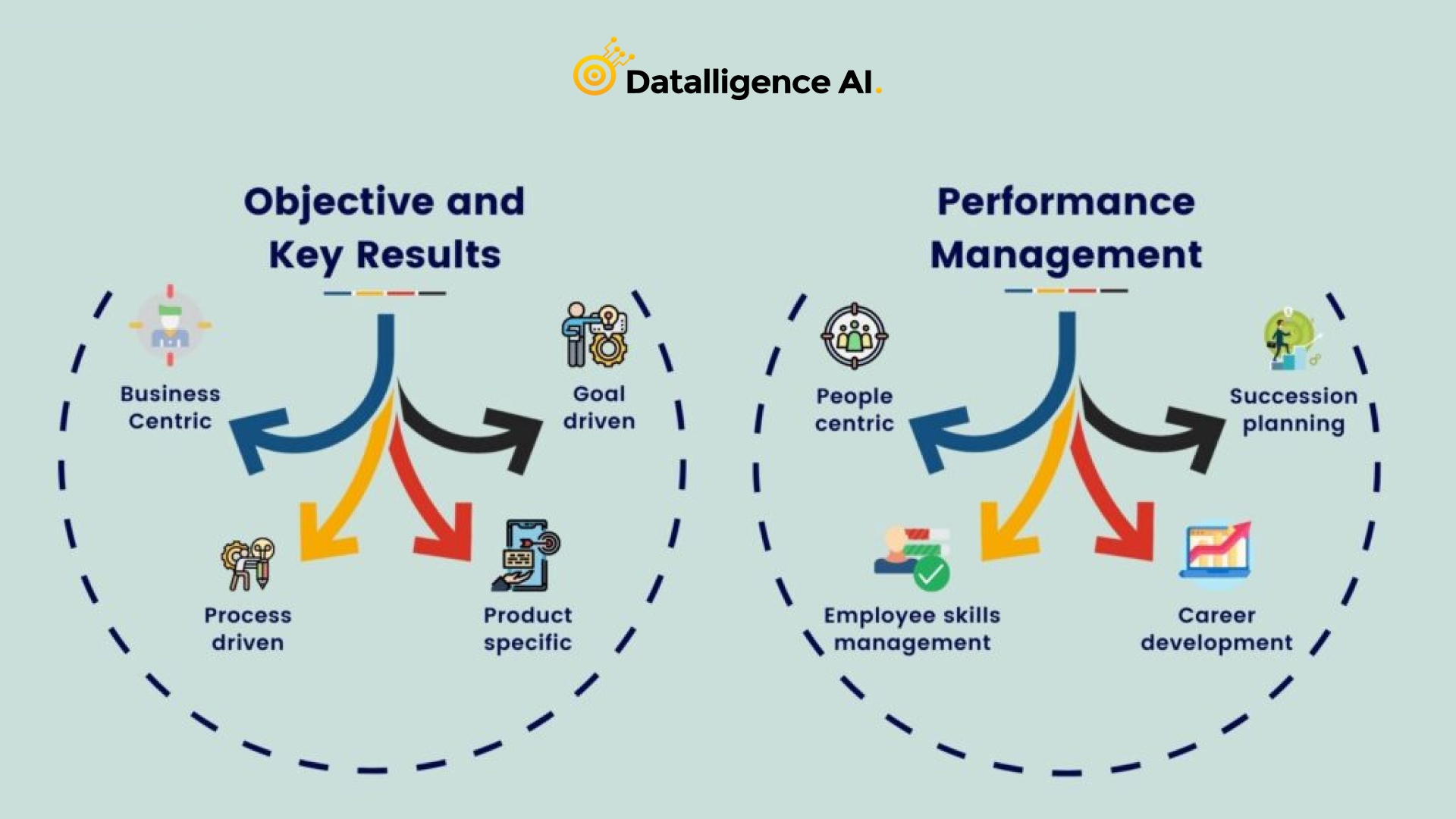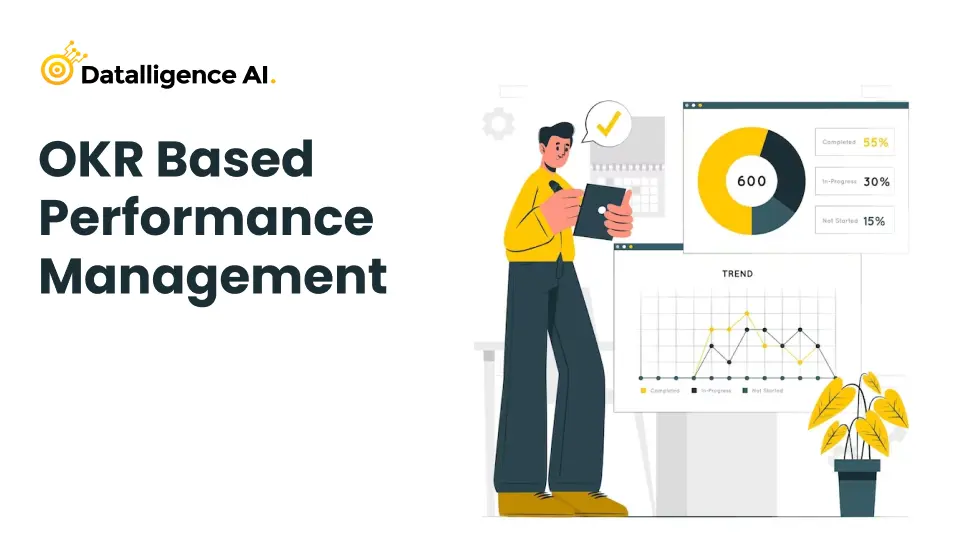OKR-Based Performance Management System
Organizations today are rapidly evolving, and managing employee performance effectively has become a critical challenge. A well-structured performance management system helps align individual and team goals with business objectives while fostering engagement and continuous improvement. One of the most effective frameworks for this is the OKR-based performance management system. OKRs (Objectives and Key Results) provide a clear direction, create alignment, and track progress with measurable outcomes.
Understanding OKRs in a Performance Management System
OKRs consist of two key components:
-
Objectives – What we aim to achieve
-
Key Results – How we measure success
By integrating OKRs within a performance management system, organizations can shift from output-based assessments to outcome-driven evaluations. OKRs encourage ambitious goal-setting while ensuring focus and alignment across all levels of an organization.
Key Benefits of OKRs in a Performance Management System
-
Goal Alignment – Ensures that individual, team, and company objectives align with strategic priorities.
-
Employee Engagement – Encourages employees to set and achieve stretch goals.
-
Continuous Progress Tracking – Provides clear indicators of success with real-time monitoring.
-
Data-Driven Decision Making – Helps leadership assess performance based on measurable results.
-
Agility and Adaptability – Enables quick course correction and improved responsiveness to change.
-
Enhanced Transparency – Creates an open culture where progress is visible, reducing silos and improving collaboration.
-
Increased Accountability – Encourages employees to take ownership of their goals and results.
What is a Performance Management System?
A performance management system is a structured approach to evaluating employee performance, setting expectations, and driving productivity. Traditional performance management often focused on annual reviews, which were time-consuming and ineffective in today’s fast-paced work environment.
Modern performance management systems emphasize ongoing feedback, continuous learning, and real-time performance tracking. These systems enable businesses to assess both individual contributions and team performance while maintaining fairness and transparency.
Difference between OKRs and performance management

While organizations practice both OKRs and performance management together, how best they can work together?
Well, OKRs and Performance management compliments each other. They work well together as both business and people aspects are addressed.
But rationally speaking, if we analyze the similarities between the two of these, there are a few methods that can help connect both OKR and performance.
But ideally, Aspirational OKR should not be aligned with performance since the success for Aspirational OKRs is considered as 70% and above, hence it might kill the ambitious spirit of an individual. Individuals will set goals that are easy to achieve since they yield incentives.
Having said that, the performance management system is no longer traditional, there is a paradigm shift in the way we analyze performance. Annual performance can be very exhausting and time-consuming. Very few HR leaders feel that this process is effective in driving value and culture. Today performance management is continuous and feedback-driven. The results are team-based and not individualistic. This is the very driving force and the alignment between Performance and OKRs.
There is a need to develop confidence and work together as a group. Not everything can be measured. To reach goals and the vision people have to think out of the box to achieve them. While OKRs break down the Annual process to quarterly objectives which give clear focus and alignment to goals. With the hybrid and the dynamic workforce in place, there is a need for continuous performance management.
Conversations, Feedback, and Recognitions (CFR) makes becomes the key to driving continuous performance management. OKR and CFR together drive transparency and empowers teams. They help you to measure what matters to the business.
- Conversations: continuous exchange of conversation among the manager and the contributor aims in driving performance.
- Feedback: Feedback are enabled bidirectionally and guide in future improvements
- Recognition: Appreciation and recognition promote motivation.
How OKRs Enhance a Performance Management System
A well-structured performance management system powered by OKRs can drive organizational success. Here’s how OKRs enhance performance evaluation:
1. Encouraging Aspirational Goals
OKRs promote ambitious goals while balancing realistic expectations. Since aspirational OKRs consider a success rate of around 70%, they drive innovation without penalizing employees for falling short of perfection.
2. Driving Continuous Performance Management
Annual reviews often fail to reflect real-time performance. A modern performance management system integrates OKRs to enable ongoing assessments and timely course corrections.
3. Aligning Business and Employee Growth
OKRs create a direct connection between company objectives and individual contributions. This alignment helps employees understand their role in achieving organizational success.
4. Boosting Team Collaboration
Team OKRs improve transparency and collective accountability. By incorporating OKRs into a performance management system, organizations foster a collaborative work culture.
5. Enhancing Conversations, Feedback, and Recognition (CFR)
CFR (Conversations, Feedback, and Recognition) is integral to modern performance management systems. When combined with OKRs, CFR helps drive continuous engagement:
-
Conversations – Ongoing discussions between managers and employees to align goals.
-
Feedback – Real-time guidance for improvement and growth.
-
Recognition – Celebrating achievements and motivating employees.
What is the difference between Performance management and continuous performance management?
There has been a transition and most of the organizations are evaluating more than numbers. They look at competency, team play, and so on. The balance between the goals and people is brought in together with OKRs.
| Annual Performance Management | Continuous Performance management |
|---|---|
| Feedback comes in annually | Feedback is continuous |
| Mostly linked to compensation | Not aligned with compensation |
| Outcome focused | Process-driven |
| Eliminates bias | Biased |
Best Practices for Implementing an OKR-Based Performance Management System
When implementing an OKR-based performance management system, it is crucial to start small and scale gradually. Organizations should begin by introducing OKRs within a pilot team before rolling them out company-wide. This phased approach allows teams to adjust and refine their goal-setting process before full implementation. Leaders should focus on ensuring transparency from the outset. Goals should be visible across the organization so that employees understand how their objectives align with the broader company vision. Transparent goal-setting fosters accountability and promotes collaboration.
Encouraging stretch goals is another essential best practice. Employees should feel motivated to push beyond their comfort zones and strive for ambitious objectives. However, these goals should be balanced with achievable milestones to maintain motivation and prevent burnout. Regular check-ins play a crucial role in maintaining momentum. Rather than relying on annual performance reviews, organizations should integrate quarterly or even monthly reviews to track progress and address challenges proactively.
Technology can significantly enhance the effectiveness of an OKR-based performance management system. Companies should leverage OKR tools to automate tracking, facilitate real-time feedback, and streamline performance conversations. These tools help employees and managers stay aligned while reducing administrative burden.
Finally, fostering a culture of continuous improvement ensures long-term success. Organizations should encourage employees to view OKRs as a dynamic and evolving process rather than a static set of goals. Adjusting objectives based on insights and feedback ensures adaptability and resilience in a constantly changing business environment.
Benefits of an OKR-Based Performance Management System
Organizations that implement OKRs within their performance management system experience several long-term benefits:
-
Increased Productivity – Employees stay focused on impactful goals, reducing distractions and improving efficiency.
-
Stronger Employee Engagement – A transparent and fair goal-setting process motivates employees to contribute actively.
-
Improved Performance Visibility – Leadership gains a clear view of company-wide progress and potential bottlenecks.
-
Higher Retention Rates – Engaged employees who see career growth opportunities are more likely to stay.
-
Faster Business Growth – Clear priorities and continuous improvements lead to sustained organizational success.
Final Thoughts
An effective performance management system powered by OKRs enables organizations to drive high performance, improve employee engagement, and foster continuous learning. By embracing a goal-setting framework that emphasizes outcomes, companies can build a culture of accountability and excellence.
At Datalligence, we provide cutting-edge OKR software to help businesses implement and streamline their performance management system. Reach out to us at www.datalligence.ai or email us at connect@datalligence.ai to transform the way you manage performance with OKRs.











